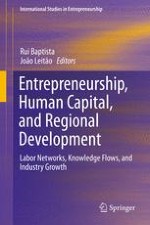2015 | OriginalPaper | Buchkapitel
11. The Influence of Creativity on Entrepreneurship: The Portuguese Case
verfasst von : André Olim, Isabel Mota, Sandra T. Silva
Erschienen in: Entrepreneurship, Human Capital, and Regional Development
Aktivieren Sie unsere intelligente Suche, um passende Fachinhalte oder Patente zu finden.
Wählen Sie Textabschnitte aus um mit Künstlicher Intelligenz passenden Patente zu finden. powered by
Markieren Sie Textabschnitte, um KI-gestützt weitere passende Inhalte zu finden. powered by
